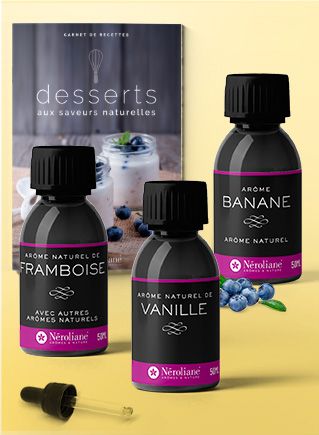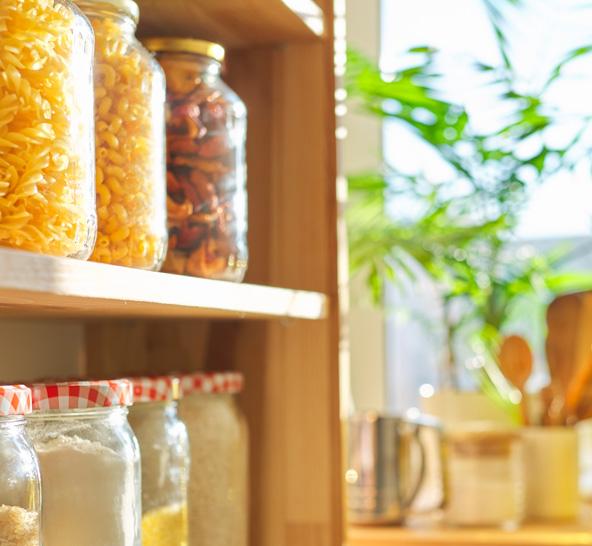Discover the latest natural organic flavours!
I discoverHomemade yoghurt: how to dose the natural flavours?

Are you a professional?
Access exclusive benefits by creating your pro account at Neroliane. Enjoy an immediate 15% discount on all your purchases!
Are you a professional?
Access exclusive benefits by creating your pro account at Neroliane. Enjoy an immediate 15% discount on all your purchases!
Have you started making homemade yoghurt and are looking for ways to flavour your delicious dairy desserts? Find out how to use natural flavours for your traditional yoghurts and other homemade yoghurts!
If you're a homemaker, you've probably already used natural food flavourings to delicately flavour biscuits, drinks, pastries, confectionery, ice cream and yoghurt. Under EU legislation, natural flavourings are ingredients of plant origin, produced by concentration, distillation, extraction, fermentation or roasting. They can be essential oils, floral waters and distillate flavours (such as rose or lavender), extracts or concentrates. Whether you like fruity flavours, floral flavours, spicy flavours or the scent of herbs, you're bound to find something to suit your taste! Having natural flavours in your cupboards means that you can have certain flavours at hand even when they are not in season, for example for fruit.
Finding the right dosage
To properly dose your natural flavouring for your homemade yoghurt, you need to identify the type of flavouring you want to use. When you start using flavourings, you can follow the recommendations given, and then you can gradually let your creativity speak for itself by adding a few drops and tasting as you go. The Nerolian teams have developed a classic dosage, which corresponds to 0.5% of natural flavouring of the total weight of your preparation. Thus, for 1 litre of milk, start with 0.5 ml of flavouring (1 teaspoon corresponds to 4 ml and 1 tablespoon corresponds to 10 ml). For 1 kilogram of another preparation, use 0.5 grams. As not all flavours have the same intensity, this dosage can be increased to 1 to 10% of the flavouring addition depending on the desired result. A strong flavour such as mint will need to be used more carefully than a milder mandarin or chocolate flavour. Strawberry flavouring, for example, should be dosed at between 3 and 5% of the preparation, while violet flavouring should be incorporated more sparingly, at 0.1%.
Where can I find natural flavours?
You can find flavours of all kinds online, including on the website of Nerolian, a family-run company specialising in natural and vegan flavours, based in Grasse, Provence. The advantage is that the formats offered, which range from 50 ml to 1 litre, are suitable for both private and professional use. Natural flavourings are also sold in some supermarkets, organic shops and large household appliance shops.
Using natural flavourings in your home-made yoghurt
To bring out the full flavour of your natural flavourings in your homemade yoghurt, add them, in the recommended dose, to your preparation just before putting it in your yoghurt maker - or in the oven or pressure cooker. Don't hesitate to taste the mixture and adjust the quantity according to your preferences.
What about other products?
The dosage does not only depend on the flavouring, it also depends on the preparation you are going to incorporate it into. For example, don't hesitate to slightly increase the natural flavours in cakes and other pastries. A long baking time tends to reduce the flavour of the flavouring.











